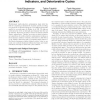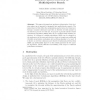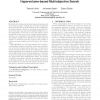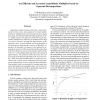44 search results - page 3 / 9 » The logarithmic hypervolume indicator |
EMO
2005
Springer
13 years 11 months ago
2005
Springer
Abstract. The hypervolume measure is one of the most frequently applied measures for comparing the results of evolutionary multiobjective optimization algorithms (EMOA). The idea t...
GECCO
2010
Springer
13 years 4 months ago
2010
Springer
Evolutionary multi-objective optimization deals with the task of computing a minimal set of search points according to a given set of objective functions. The task has been made e...
PPSN
2004
Springer
13 years 11 months ago
2004
Springer
Abstract. This paper discusses how preference information of the decision maker can in general be integrated into multiobjective search. The main idea is to first define the opti...
GECCO
2010
Springer
13 years 9 months ago
2010
Springer
Multiobjective optimization in general aims at learning about the problem at hand. Usually the focus lies on objective space properties such as the front shape and the distributio...
VLSID
2006
IEEE
14 years 6 months ago
2006
IEEE
Logarithmic Number Systems (LNS) offer a viable alternative in terms of area, delay and power to binary number systems for multiplication and division operations in signal process...




